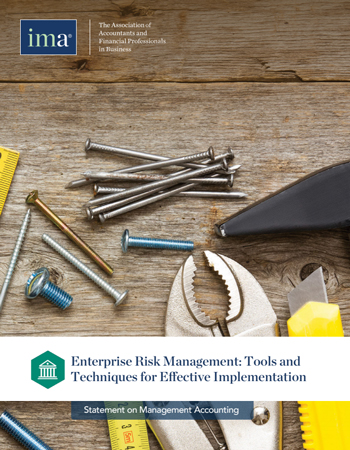
One of the authors’ earlier studies of enterprise risk management (ERM) stated that the goal of ERM is to create, protect, and enhance shareholder value. Since then, ERM research has shown that ERM adds value and helps organizations make better decisions. ERM takes a broad perspective on identifying the risks that could cause an organization to fail to meet its strategies and objectives. The Committee of Sponsoring Organizations of the Treadway Commission (COSO) defines ERM as, “The culture, capabilities, and practices, integrated with strategysetting and performance, that organizations rely on to manage risk in creating, preserving, and realizing value.” To meet more objectives (strategic, operational, or in other areas) more of the time, organizations must get better at managing risks. In this IMA? (Institute of Management Accountants) Statement on Management Accounting (SMA), several techniques for identifying risks are discussed and illustrated with examples from company experiences. Once risks are identified, the next issue is to determine the root causes or what drives the risks. A suggested approach is described and followed by a discussion of several qualitative and quantitative procedures for assessing risks. Some practical ERM implementation considerations are also explored, including infrastructure and maturity models, staging adoption, the role of the management accountant, education and training, technology, aligning corporate culture, building a case for ERM, and the return on investment (ROI) of ERM. Any organization—large or small; public, private, or not-for-profit; U.S.-based or global—that has a stakeholder with expectations for business success can benefit from the tools and techniques provided in this SMA.